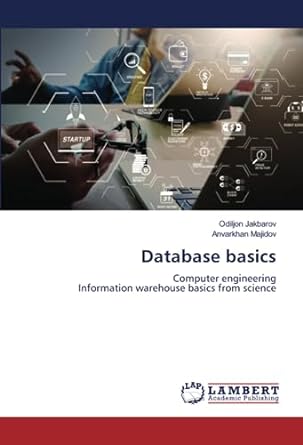Question
You have a 10-liter container, a 7-liter container, and a 4-liter container. The large container is empty; the other two are full of water. You
You have a 10-liter container, a 7-liter container, and a 4-liter container. The large container is empty; the other two are full of water. You are challenged to rearrange the water, using as few operations as possible, so that there are exactly two liters in either the 7-liter or the 4-liter container. You are allowed to perform only one type of operation: pouring the contents of one container into another, stopping only when the source container is empty or the destination container is full.
In this problem, your goal is to model this scenario as a graph and to solve it with a graph algorithm.
Answer the following questions:
What should each vertex in the graph represent?
What should each edge in the graph represent?
What specific question about the graph needs to be answered to solve the problem?
What algorithm should be used to answer the question from posed above? BFS, Strongly connected components, topological sort, or DFS?
Step by Step Solution
There are 3 Steps involved in it
Step: 1

Get Instant Access to Expert-Tailored Solutions
See step-by-step solutions with expert insights and AI powered tools for academic success
Step: 2

Step: 3

Ace Your Homework with AI
Get the answers you need in no time with our AI-driven, step-by-step assistance
Get Started


